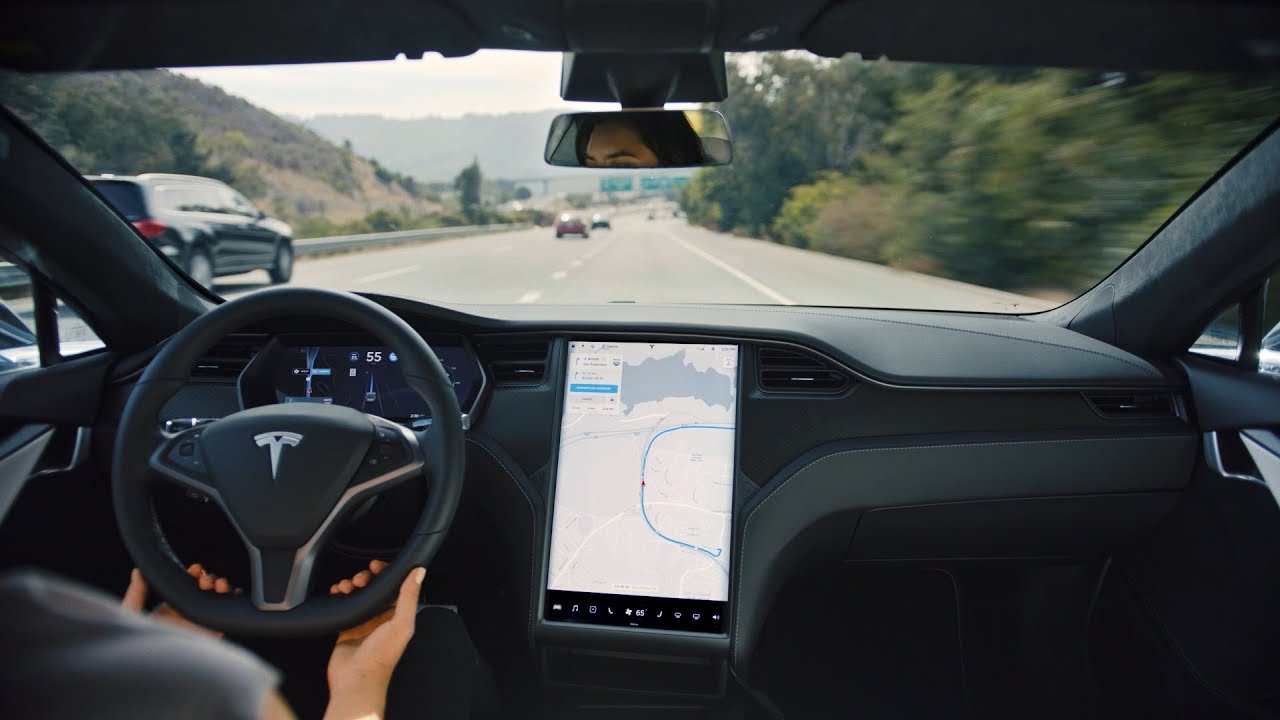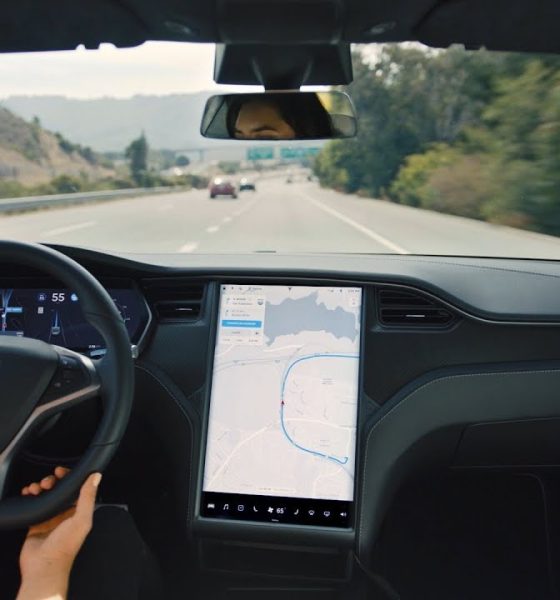A Tesla owner recently critiqued the performance of Autopilot and Full Self-Driving after the conclusion of a 6,400-mile trip across the United States. According to the driver, more than 99 percent of the trip was driven utilizing Tesla’s semi-autonomous driving functions, with the critiques showing the automaker’s strengths and weaknesses in terms of how both Autopilot and FSD can affect a drive of this substantial distance.
Tim Heckman took his Model S Plaid equipped with FSD Beta and Tesla Vision on the 6,392-mile trip from Los Angeles to Reading, Pennsylvania, and back, recording most of the (currently unreleased) footage on a GoPro mounted inside the vehicle. There were undoubtedly positives but also negatives, as Heckman describes the utilization of Autopilot and FSD on a trip of this length as an advantage in the “personal cost” of driving this many miles in a matter of two weeks.
On December 15th I left to drive from Los Angeles to near Philadelphia. Got back yesterday, after a total of 6,392 miles in the Model S Plaid with #FSDBeta.
Drove more than 99% autonomously, and I’ve some not great @Tesla Autopilot + FSD thoughts and experiences to share… ?
— Tim Heckman (@theckman) January 1, 2023
But where Tesla’s systems helped, it hurt elsewhere. Heckman describes frustration with the company’s recent transition to a camera-only approach, known as Tesla Vision, the suite’s lack of consistency outside of California, and where the company might have spent its focus over the past few years during the development.
No Radar, No Problem?
As Heckman took the drive in a Model S Plaid with camera-based Tesla Vision, the lack of radar was the first point of emphasis. Autopilot was more accurate and less stressful in a previous Tesla that equipped both cameras and radar for operation, Heckman said. “The removal of radar on the highway was a huge mistake,” he said in a Tweet. “Tesla Vision very often misidentified vehicles in front as being much closer than they are, trigging strong phantom braking. Sometimes losing 20mph of speed before I can react, which is a huge safety concern.”
During some points of the drive, the vehicle would recognize cars and adjust speeds that were not actually there. Additionally, Tesla Vision’s performance in low-visibility conditions like rain and fog was not ideal. Past iterations of the suites proved more effective, in Heckman’s opinion.
The automaker rolled out Tesla Vision in early 2021 in the Model 3 and Model Y, and the Model S and Model X received the update in 2022. When Tesla announced it would transition to a camera-only system, CEO Elon Musk explained that radar had helped solve the shortfalls that cameras couldn’t solve. However, it was never in the plan to rely on both radar and cameras.
“And when your vision works, it works better than the best human because it’s like having eight cameras, it’s like having eyes in the back of your head, beside[s] your head and has three eyes of different focal distances looking forward. This is — and processing it at a speed that is superhuman. There’s no question in my mind that with a pure vision solution, we can make a car that is dramatically safer than the average person,” Musk said during the Q1 2021 Earnings Call.
Speed Limit Changes
Another huge problem Heckman described was a slow decrease in speed after the reduction of speed limits in an area. This occurred on streets and not on the highway, but still raised some concern. Heckman noted it took “many seconds” to reach the legal speed when limits decreased by as much as 20 MPH.
In fact, someone I know was pulled over on New Years Eve (yesterday) by a Nevada state trooper because #FSD took too long to slow down in observance of the speed limit going from 55mph to 35mph.
Is that acceptable? Especially when we’ll have single stack on the highway?
— Tim Heckman (@theckman) January 1, 2023
Were Autopilot and FSD beneficial during this trip?
Yes.
“I love long road trips, and Autopilot makes them easier,” Heckman said. Despite the issues, it was still a pleasant experience and something he hopes to do again on his next trek from LA to PA.
At the end of the day, I think this stuff has tremendous potential. But at this point there needs to be focus and good execution, while not causing regressions in the experience especially on features that impact your safety and the safety of others on the road.
— Tim Heckman (@theckman) January 1, 2023
Heckman said he believes the lack of progress and improvements when speaking in terms of highway performance may be related to Tesla’s focus on solving self-driving on city streets.
“As a result of changing focus, Autopilot experience is worse than when we got our Model 3 in summer 2019,” he said.
Fun Fact: Tim told me his two longest days of driving were from Fort Worth, TX, to Burbank, CA, equating to roughly 1,404 miles, and from Burbank, CA, to Amarillo, TX, for 1,079 miles.
I’d love to hear from you! If you have any comments, concerns, or questions, please email me at joey@teslarati.com. You can also reach me on Twitter @KlenderJoey, or if you have news tips, you can email us at tips@teslarati.com.

News
Tesla FSD fleet is nearing 7 billion total miles, including 2.5 billion city miles
As can be seen on Tesla’s official FSD webpage, vehicles equipped with the system have now navigated over 6.99 billion miles.

Tesla’s Full Self-Driving (Supervised) fleet is closing in on almost 7 billion total miles driven, as per data posted by the company on its official FSD webpage.
These figures hint at the massive scale of data fueling Tesla’s rapid FSD improvements, which have been quite notable as of late.
FSD mileage milestones
As can be seen on Tesla’s official FSD webpage, vehicles equipped with the system have now navigated over 6.99 billion miles. Tesla owner and avid FSD tester Whole Mars Catalog also shared a screenshot indicating that from the nearly 7 billion miles traveled by the FSD fleet, more than 2.5 billion miles were driven inside cities.
City miles are particularly valuable for complex urban scenarios like unprotected turns, pedestrian interactions, and traffic lights. This is also the difference-maker for FSD, as only complex solutions, such as Waymo’s self-driving taxis, operate similarly on inner-city streets. And even then, incidents such as the San Francisco blackouts have proven challenging for sensor-rich vehicles like Waymos.
Tesla’s data edge
Tesla has a number of advantages in the autonomous vehicle sector, one of which is the size of its fleet and the number of vehicles training FSD on real-world roads. Tesla’s nearly 7 billion FSD miles then allow the company to roll out updates that make its vehicles behave like they are being driven by experienced drivers, even if they are operating on their own.
So notable are Tesla’s improvements to FSD that NVIDIA Director of Robotics Jim Fan, after experiencing FSD v14, noted that the system is the first AI that passes what he described as a “Physical Turing Test.”
“Despite knowing exactly how robot learning works, I still find it magical watching the steering wheel turn by itself. First it feels surreal, next it becomes routine. Then, like the smartphone, taking it away actively hurts. This is how humanity gets rewired and glued to god-like technologies,” Fan wrote in a post on X.
News
Tesla starts showing how FSD will change lives in Europe
Local officials tested the system on narrow country roads and were impressed by FSD’s smooth, human-like driving, with some calling the service a game-changer for everyday life in areas that are far from urban centers.

Tesla has launched Europe’s first public shuttle service using Full Self-Driving (Supervised) in the rural Eifelkreis Bitburg-Prüm region of Germany, demonstrating how the technology can restore independence and mobility for people who struggle with limited transport options.
Local officials tested the system on narrow country roads and were impressed by FSD’s smooth, human-like driving, with some calling the service a game-changer for everyday life in areas that are far from urban centers.
Officials see real impact on rural residents
Arzfeld Mayor Johannes Kuhl and District Administrator Andreas Kruppert personally tested the Tesla shuttle service. This allowed them to see just how well FSD navigated winding lanes and rural roads confidently. Kruppert said, “Autonomous driving sounds like science fiction to many, but we simply see here that it works totally well in rural regions too.” Kuhl, for his part, also noted that FSD “feels like a very experienced driver.”
The pilot complements the area’s “Citizen Bus” program, which provides on-demand rides for elderly residents who can no longer drive themselves. Tesla Europe shared a video of a demonstration of the service, highlighting how FSD gives people their freedom back, even in places where public transport is not as prevalent.
What the Ministry for Economic Affairs and Transport says
Rhineland-Palatinate’s Minister Daniela Schmitt supported the project, praising the collaboration that made this “first of its kind in Europe” possible. As per the ministry, the rural rollout for the service shows FSD’s potential beyond major cities, and it delivers tangible benefits like grocery runs, doctor visits, and social connections for isolated residents.
“Reliable and flexible mobility is especially vital in rural areas. With the launch of a shuttle service using self-driving vehicles (FSD supervised) by Tesla in the Eifelkreis Bitburg-Prüm, an innovative pilot project is now getting underway that complements local community bus services. It is the first project of its kind in Europe.
“The result is a real gain for rural mobility: greater accessibility, more flexibility and tangible benefits for everyday life. A strong signal for innovation, cooperation and future-oriented mobility beyond urban centers,” the ministry wrote in a LinkedIn post.
News
Tesla China quietly posts Robotaxi-related job listing
Tesla China is currently seeking a Low Voltage Electrical Engineer to work on circuit board design for the company’s autonomous vehicles.

Tesla has posted a new job listing in Shanghai explicitly tied to its Robotaxi program, fueling speculation that the company is preparing to launch its dedicated autonomous ride-hailing service in China.
As noted in the listing, Tesla China is currently seeking a Low Voltage Electrical Engineer to work on circuit board design for the company’s autonomous vehicles.
Robotaxi-specific role
The listing, which was shared on social media platform X by industry watcher @tslaming, suggested that Tesla China is looking to fill the role urgently. The job listing itself specifically mentions that the person hired for the role will be working on the Low Voltage Hardware team, which would design the circuit boards that would serve as the nervous system of the Robotaxi.
Key tasks for the role, as indicated in the job listing, include collaboration with PCB layout, firmware, mechanical, program management, and validation teams, among other responsibilities. The role is based in Shanghai.
China Robotaxi launch
China represents a massive potential market for robotaxis, with its dense urban centers and supportive policies in select cities. Tesla has limited permission to roll out FSD in the country, though despite this, its vehicles have been hailed as among the best in the market when it comes to autonomous features. So far, at least, it appears that China supports Tesla’s FSD and Robotaxi rollout.
This was hinted at in November, when Tesla brought the Cybercab to the 8th China International Import Expo (CIIE) in Shanghai, marking the first time that the autonomous two-seater was brought to the Asia-Pacific region. The vehicle, despite not having a release date in China, received a significant amount of interest among the event’s attendees.










